October 2, 2012
Stitch Fun: Guilloche Stitch
After showing you yesterday’s interlaced chain stitch, I thought I’d follow up with another composite embroidery stitch that involves lacing – Guilloche Stitch.
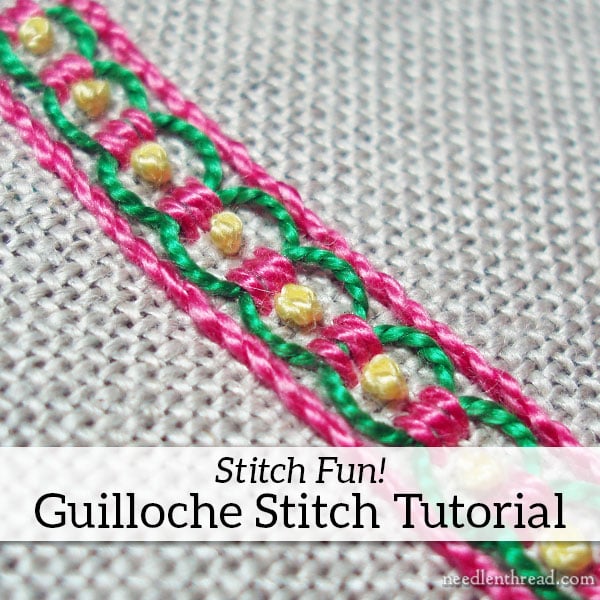
October 2, 2012
After showing you yesterday’s interlaced chain stitch, I thought I’d follow up with another composite embroidery stitch that involves lacing – Guilloche Stitch.

October 1, 2012
Composite stitches are hand embroidery stitches made up of two or more stitches that work together to create another stitch. It seems sort of odd to call a composite stitch a “stitch,” in the singular sense, because you actually have to work at least two stitches (and in the case of today’s example, three stitches) in order for the whole new stitch to come off.
Composite stitches are heaps of fun to play with! They’re usually very intricate looking, without being difficult to do. Most elements of a composite stitch, taken alone, are simple, basic stitches. With today’s interlaced chain stitch, I’ll show you what I mean!
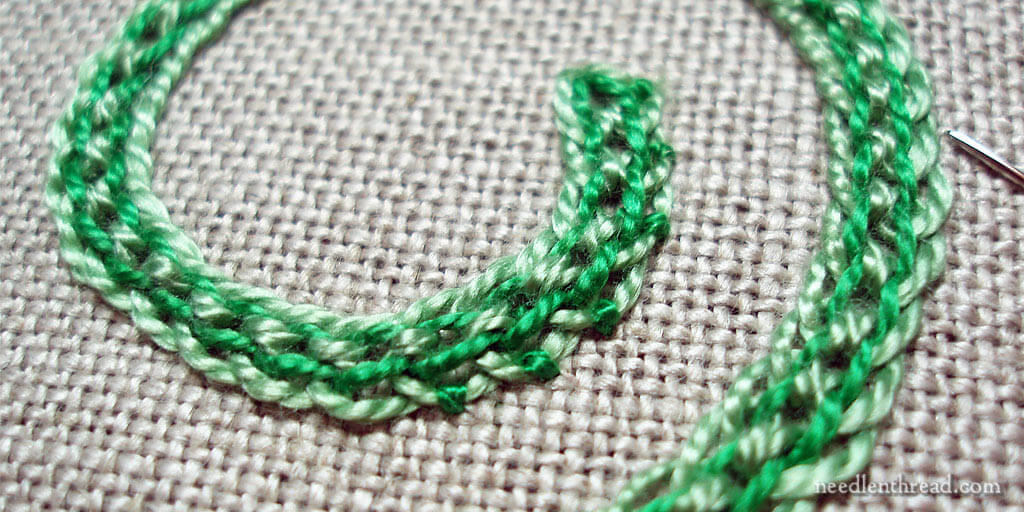
September 29, 2012
You already know I’m an old needlework book junkie, don’t you? Old books can be expensive – but, with a bit of luck, you can stumble upon them for practically nothing at used book shops (takes some digging, I’ll admit), library book sales, online sources, and even garage sales.
I’ll never forget the happy day I found one lonely copy of Lucy Mackrille’s Church Embroidery and Church Vestments through a used book seller. I had been searching for a copy of it for years. At the time, there was one source selling photocopies of it, but it was very hard to find an original volume. This was before “virtual” libraries and collections became popular online, too. Well, I finally landed a copy – at $110 – and I bought it! I grimaced at the price but it’s an investment I’ve never regretted.
One part of that story – the ironic part – is this: within a year of buying the book, I found another copy of it in pristine condition (some of the pages hadn’t even been cut!), at a library book sale.
For 50¢.
So, see – it’s always worth looking, digging, burrowing, foraging about for old books, because you never know what treasures you’ll find – and if you find them at a bargain price, it’s like your birthday and Christmas all rolled into one!
Today, I’d like to share a pattern with you from a book in my collection. It’s a stylized rose, somewhat Morris-esque in design, and drawn from an altar frontal that is discussed in detail in the book.
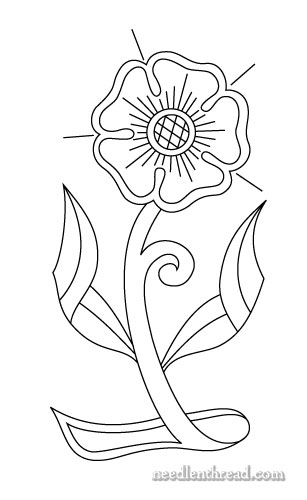
September 28, 2012
This antique goldwork panel has me completely enchanted, if you hadn’t guessed by the inordinate amount of exploratory articles devoted to it!
Besides learning about the piece itself and the techniques involved to create the panel, I do have an ulterior motive in the study of it. More than likely, I’ll develop a project based on it. I like embroidery projects that are spin-offs of something I’ve learned about. And this goldwork panel appeals to me so much, that I think a spin-off project is an absolute necessity.
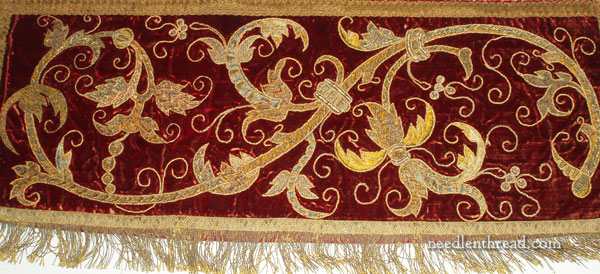
September 27, 2012
Time for a guest post! Today, Laurie Latour speaks about Gingham Lace, which is also known as “chicken scratch embroidery,” among other names. In today’s article, Laurie shares with us some photos of beautiful pieces from her own collection and tells us a bit about stitching on gingham. Enjoy!
Lace and gingham – hmmmmmm…. not usually thought of together, especially not as an embroidery stitch. While it’s not real lace-making, lace stitch is a type of needle weaving worked on gingham that produces many lacy looks. It’s not difficult to do and works up quickly. Inexpensive gingham and floss are the only supplies needed, which is, no doubt, one reason it was especially popular during the Great Depression.
Depression Lace, Hoover Lace, Snowflake Lace, Amish Lace – it goes by many names. Let’s take a look at some pieces from my collection.
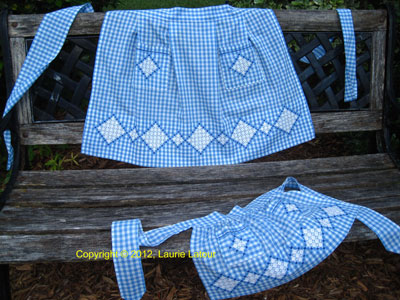
September 26, 2012
Oh, the plaited braid stitch! It is a beautiful stitch, but unfortunately, for some reason, many stitchers are intimidated by it. Let’s alleviate that intimidation, shall we?
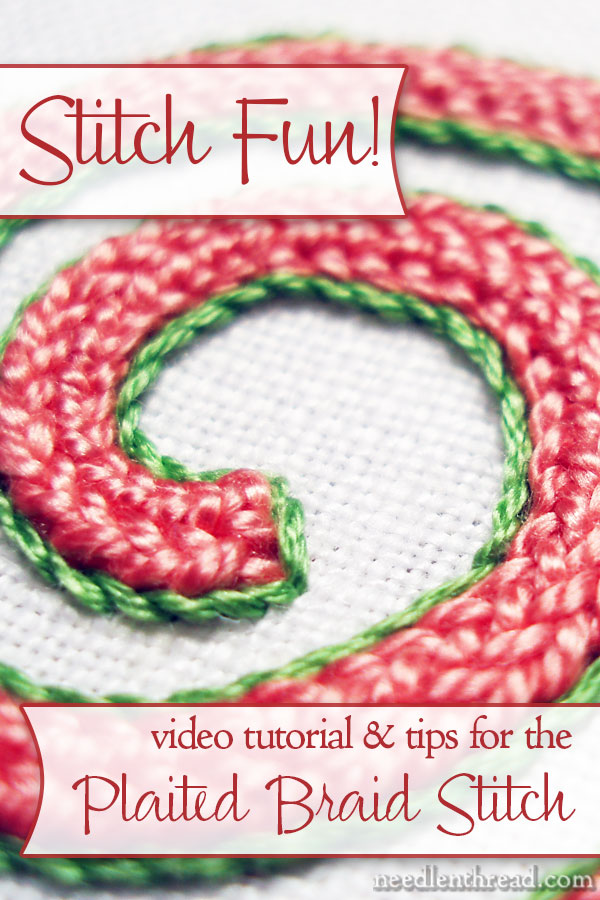
September 25, 2012
Just a quick little note today, to offer you some inspirational stitching from a reader!